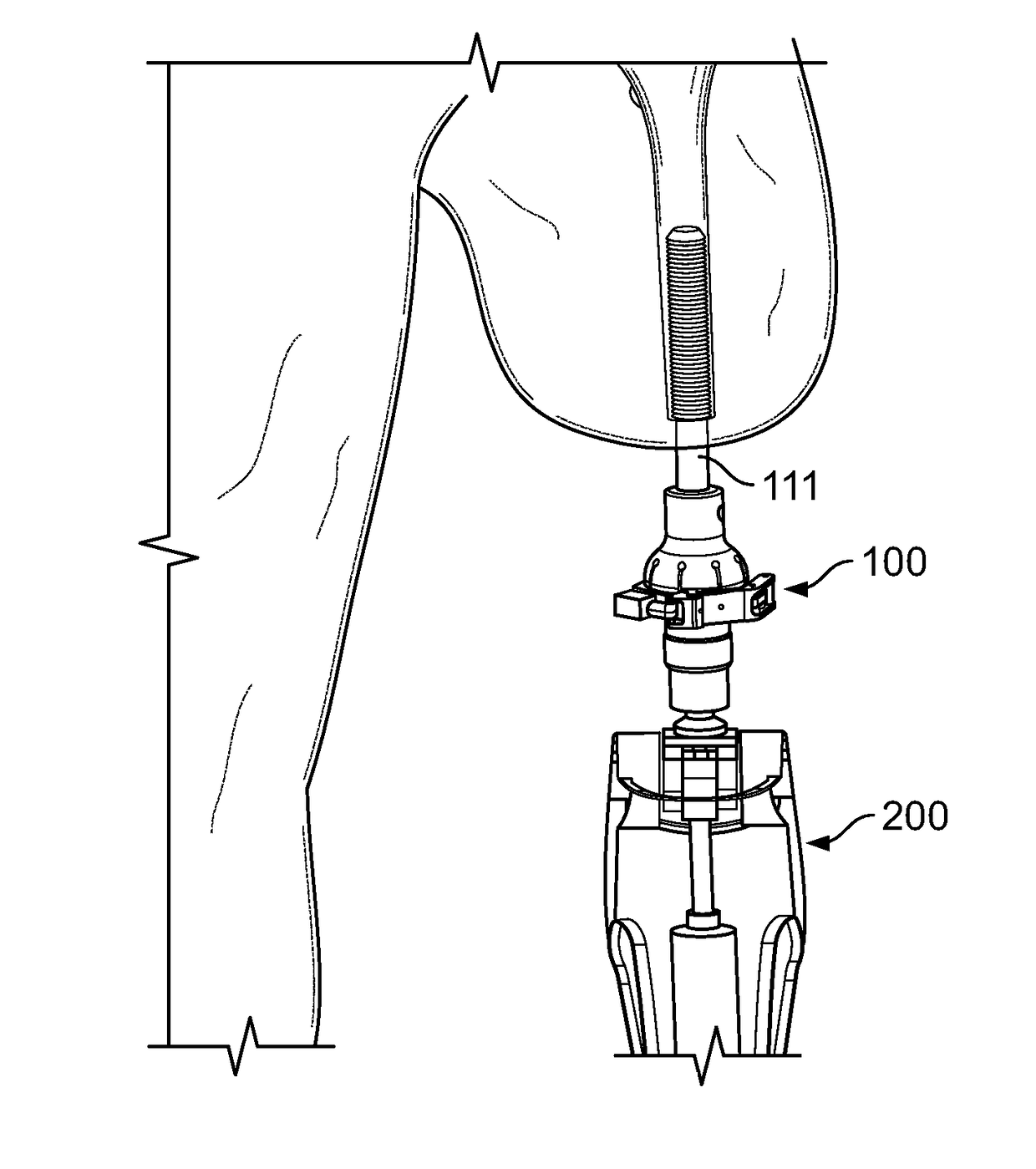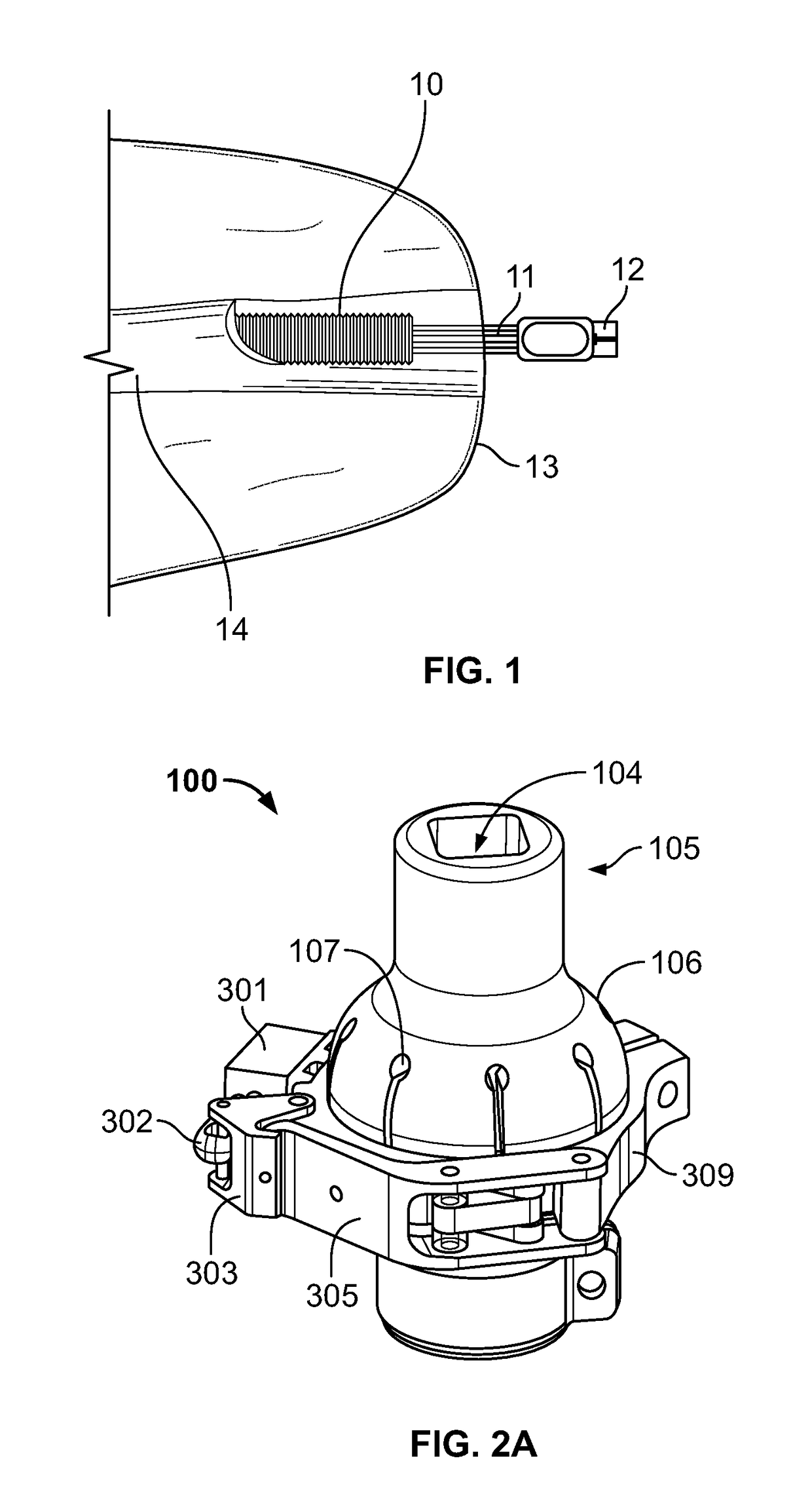Safety Overload for Direct Skeletal Attachment
a safety overload and skeletal technology, applied in the field of direct skeletal attachment safety overload, can solve the problems of less satisfactory functional outcome of a prosthesis, compromise of prosthesis control, and difficulty in achieving the effect of ensuring the safety of the skeletal attachmen
- Summary
- Abstract
- Description
- Claims
- Application Information
AI Technical Summary
Benefits of technology
Problems solved by technology
Method used
Image
Examples
Embodiment Construction
[0023]An embodiment discloses a safety mechanism, referred to herein as an “overload device” or simply as a “device”, to be used with artificial limbs that attach directly to the skeletal system. The overload device may be used to assist persons with transfemoral amputation. One benefit of embodiments disclosed herein is improve the safety of bone-anchored prostheses for individuals with transfemoral amputations.
[0024]FIG. 1 shows a view of an osseointegrated implant system, comprising fixture 10, abutment 11, abutment screw 12, skin 13, and bone 14. In various embodiments, systems and methods are disclosed that can prevent overloading of the bone and implant for prostheses that are attached directly to the skeletal system. In an embodiment, such systems and methods may be used in connection with an OPRA implant system, which it is a threaded implant that is potentially susceptible to torsion and loosening.
[0025]In an embodiment, an overload device functions as a fail-safe mechanism...
PUM
 Login to View More
Login to View More Abstract
Description
Claims
Application Information
 Login to View More
Login to View More - R&D
- Intellectual Property
- Life Sciences
- Materials
- Tech Scout
- Unparalleled Data Quality
- Higher Quality Content
- 60% Fewer Hallucinations
Browse by: Latest US Patents, China's latest patents, Technical Efficacy Thesaurus, Application Domain, Technology Topic, Popular Technical Reports.
© 2025 PatSnap. All rights reserved.Legal|Privacy policy|Modern Slavery Act Transparency Statement|Sitemap|About US| Contact US: help@patsnap.com



